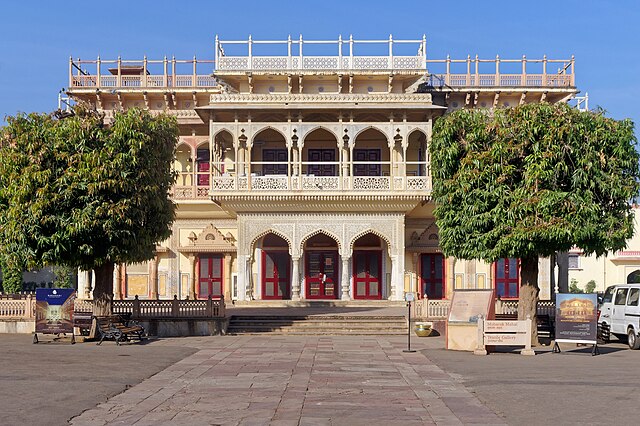Have you ever wondered why Jaipur, the bustling capital of Rajasthan, is lovingly called the Pink City? It’s not just a catchy nickname—it’s a story woven into the very walls of this vibrant city. Jaipur’s rosy hue, rich history, and cultural splendor make it one of India’s most iconic destinations. Let’s embark on a journey to uncover why Jaipur earned this title, what makes it so special, and why it’s a must-visit for anyone craving a blend of history, architecture, and culture. Ready to dive into the pink-tinted world of Jaipur? Let’s go!
The Origin of the Pink City Nickname
So, why is Jaipur called the Pink City? The story takes us back to 1876, when Maharaja Sawai Ram Singh II decided to give the city a makeover. The Prince of Wales, later King Edward VII, was visiting, and the Maharaja wanted to roll out the red carpet—or rather, the pink one! Pink, in Rajasthani culture, symbolizes hospitality, so the entire city was painted a warm terracotta pink to welcome the royal guest. The color stuck, and so did the nickname. It’s like the city decided to wear its heart on its sleeve, or in this case, its walls!
A Royal Welcome That Changed Jaipur Forever
Imagine the hustle and bustle of Jaipur in the 19th century, with workers scurrying to paint every building in sight. The Maharaja’s decision wasn’t just about aesthetics; it was a bold statement of Jaipur’s warmth and grandeur. The pink wasn’t just slapped on randomly either—it was a carefully chosen shade that reflected the local sandstone used in many of Rajasthan’s structures. This wasn’t just a paint job; it was a love letter to hospitality, etched in color.
The Law That Keeps Jaipur Pink
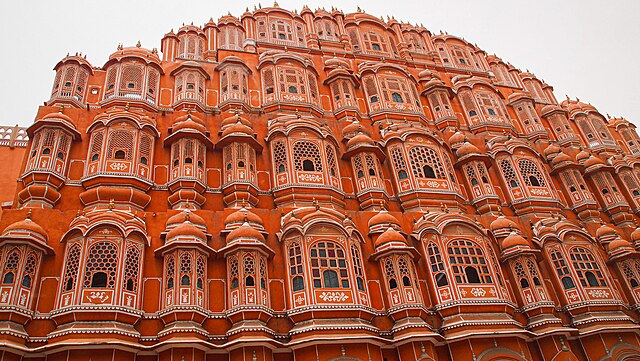
Here’s the kicker: Jaipur’s pink vibe isn’t just a historical quirk—it’s the law! Even today, building regulations in the old city mandate that structures maintain that signature pink hue. It’s like the city has a dress code, and pink is always in fashion. This commitment ensures that Jaipur’s charm remains intact, making every stroll through its streets feel like stepping into a living postcard.
Jaipur’s Founding: A Planned City with a Purpose
Jaipur wasn’t always the Pink City. Founded in 1727 by Maharaja Sawai Jai Singh II, it was one of India’s first planned cities. The Maharaja, a visionary and astronomy enthusiast, designed Jaipur with precision, using principles of Vastu Shastra and a grid-like layout. Think of it as an 18th-century urban planner’s dream, with wide streets and organized sectors that still function beautifully today. This forward-thinking design laid the foundation for Jaipur’s unique identity.
The Genius of Vastu Shastra
Ever heard of Vastu Shastra? It’s an ancient Indian architectural science that emphasizes harmony with nature. Jaipur’s layout, with its nine-grid structure, was meticulously planned to align with these principles. Each sector was designed for specific purposes, like a cosmic blueprint for prosperity. It’s no wonder the city feels so balanced—every corner seems to hum with purpose and energy.
Iconic Landmarks of the Pink City
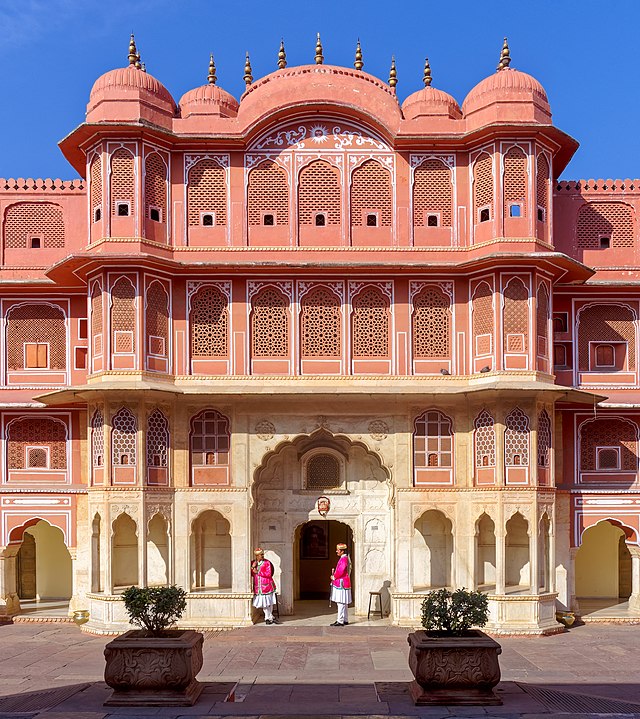
Jaipur’s pink allure isn’t just about the color—it’s about the stories told by its palaces, forts, and markets. Let’s explore some of the must-visit landmarks that make the Pink City shine.
Hawa Mahal: The Palace of Winds
Picture this: a five-story palace with 953 delicate windows, designed to let cool breezes flow through while allowing royal women to peek at the world outside. That’s Hawa Mahal, Jaipur’s most iconic structure. Its pink sandstone facade is like a honeycomb, both functional and breathtaking. Visiting Hawa Mahal feels like stepping into a fairy tale—can you imagine the secrets those windows have witnessed?
City Palace: A Royal Masterpiece
The City Palace is the heart of Jaipur, a sprawling complex blending Mughal and Rajput architecture. It’s still home to the royal family, but parts are open to visitors. Wander through its courtyards, marvel at the intricate Peacock Gate, and don’t miss the museum’s collection of royal artifacts. It’s like walking through a living history book, with every corner whispering tales of royalty.
Amber Fort: A Hilltop Marvel
Perched on a hill just outside Jaipur, Amber Fort is a masterpiece of Rajput architecture. Its golden-hued walls (don’t worry, it’s still part of the Pink City vibe!) house stunning courtyards, mirror palaces, and gardens. The fort’s Sheesh Mahal, with its dazzling mirror work, is like stepping into a kaleidoscope. A visit here is a must—trust me, the views alone are worth the climb!
The Cultural Heartbeat of Jaipur
Jaipur isn’t just about pretty buildings; it’s a city that pulses with culture. From vibrant festivals to mouthwatering cuisine, the Pink City knows how to live life in full color.
Festivals That Light Up the City
Ever been to a festival that feels like the whole city is celebrating? Jaipur’s got plenty. The Teej Festival, with its colorful processions, and the Jaipur Literature Festival, a haven for book lovers, are just the start. Diwali here is a sight to behold, with the pink buildings glowing under thousands of twinkling lights. It’s like the city throws a party and everyone’s invited!
Rajasthani Cuisine: A Feast for the Senses
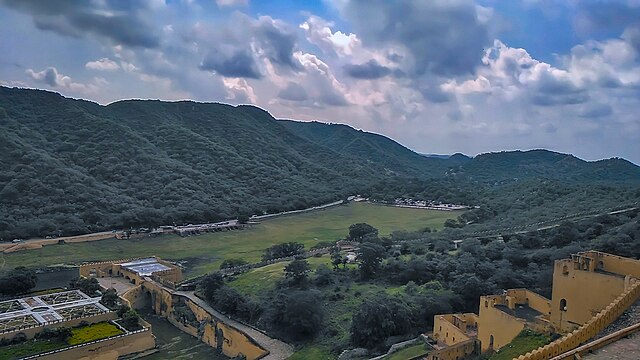
Hungry? Jaipur’s food scene is a treat. From spicy dal baati churma to sweet ghevar, the city’s cuisine is as bold as its pink walls. Street food stalls and upscale restaurants alike serve dishes that pack a punch. Ever tried a piping hot pyaaz kachori? It’s like a flavor explosion in every bite. Food in Jaipur isn’t just sustenance; it’s a celebration of life.
Shopping in Jaipur: A Treasure Hunt
Calling all shopaholics! Jaipur’s markets are a paradise for anyone who loves a good bargain. Johari Bazaar and Bapu Bazaar are bursting with colorful textiles, jewelry, and handicrafts. Ever haggled for a pair of jootis or a hand-stitched quilt? It’s an adventure in itself. The pink-hued shops add to the charm, making every purchase feel like a souvenir from a magical place.
Jaipur’s Jewelry and Textiles
Jaipur is famous for its gemstones and traditional textiles. The city’s jewelers craft everything from kundan to polki jewelry, while block-printed fabrics and bandhani sarees are a shopper’s dream. It’s like the city’s artisans pour their hearts into every piece, creating treasures you’ll want to take home.
Why Visit Jaipur Today?
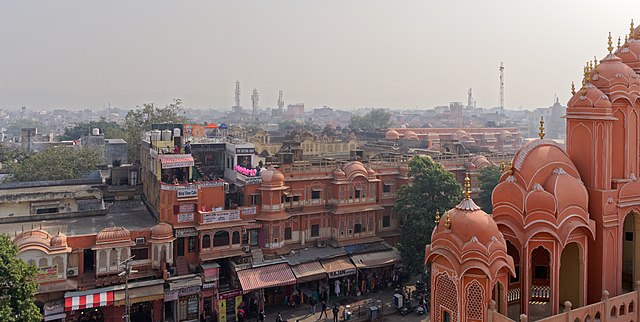
Jaipur’s charm isn’t stuck in the past—it’s a modern city with a timeless soul. Whether you’re a history buff, a foodie, or just someone who loves vibrant vibes, the Pink City has something for you. Its blend of old-world charm and modern energy makes it a destination that feels both nostalgic and fresh. Why not plan a trip and see the pink magic for yourself?
Modern Jaipur: A City on the Move
Don’t let the historical vibe fool you—Jaipur’s got a modern side too. With trendy cafes, art galleries, and a growing startup scene, it’s a city that’s evolving while staying true to its roots. The metro system makes getting around a breeze, and the nightlife is buzzing with energy. It’s like Jaipur’s wearing its pink heritage with a cool, contemporary twist.
Tips for Exploring the Pink City
Ready to visit? Here are a few tips to make your Jaipur adventure unforgettable. First, wear comfortable shoes—those forts and markets require some walking! Second, visit in winter (October to March) for pleasant weather. And don’t forget to carry a camera—the pink backdrops are Instagram gold. Planning your itinerary? Include a mix of iconic sites and offbeat gems like Patrika Gate for that perfect balance.
The Pink City’s Global Appeal
Jaipur’s fame extends far beyond India. It’s a UNESCO World Heritage Site, celebrated for its planned layout and architectural beauty. Travelers from across the globe flock to its pink streets, drawn by its unique blend of history and hospitality. It’s like the world can’t resist the Pink City’s charm—and honestly, who can blame them?
Conclusion
Jaipur, the Pink City, is more than just a nickname—it’s a testament to a city that wears its heart in every pink-hued wall. From its royal history to its vibrant culture, Jaipur invites you to step into a world where tradition meets modernity in the most colorful way possible. Whether you’re exploring majestic forts, savoring spicy delicacies, or shopping for treasures, the Pink City promises an experience that’s as warm and welcoming as its rosy facades. So, what are you waiting for? Pack your bags and let Jaipur’s pink magic sweep you off your feet!
FAQs
1. Why is Jaipur called the Pink City?
Jaipur earned the nickname Pink City in 1876 when Maharaja Sawai Ram Singh II painted the city pink to welcome the Prince of Wales. Pink symbolizes hospitality in Rajasthani culture, and the tradition continues today.
2. What are the must-visit places in Jaipur?
Top spots include Hawa Mahal, City Palace, Amber Fort, Jantar Mantar, and the vibrant markets like Johari Bazaar. Each offers a unique glimpse into Jaipur’s rich heritage.
3. When is the best time to visit Jaipur?
The ideal time is between October and March when the weather is cooler and perfect for exploring the city’s outdoor attractions.
4. What is Jaipur famous for?
Jaipur is renowned for its pink architecture, royal palaces, vibrant festivals, gemstone jewelry, and traditional Rajasthani cuisine like dal baati churma.
5. Is Jaipur a good destination for solo travelers?
Absolutely! Jaipur is safe and welcoming, with plenty of guided tours, bustling markets, and cultural experiences that make it ideal for solo adventurers.

